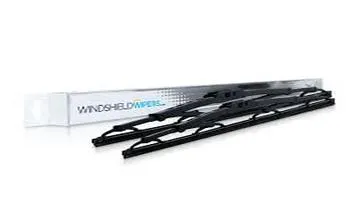Wiper Blades A Detailed Insight into an Essential Automotive Component
Wiper blades are an essential component of a vehicle's windshield wiper system, designed to ensure clear visibility during adverse weather conditions such as rain, snow, or sleet. Typically made from rubber or silicone, these slender strips are attached to the wiper arms, which move across the windshield to efficiently clear away moisture and debris. Wiper blades come in various sizes and types, including conventional, beam, and hybrid styles, each offering different levels of performance and durability. Over time, exposure to the elements can cause wiper blades to wear out, resulting in streaking or reduced effectiveness. Regular inspection and replacement are crucial for maintaining optimal visibility and safety on the road, making wiper blades a vital part of routine vehicle maintenance.

Wiper blades may not be the most glamorous part of your vehicle, but they are undeniably one of the most critical for ensuring safety and visibility on the road. From torrential downpours to light drizzles, snowstorms to dusty winds, wiper blades are the unsung heroes that keep your windshield clear, enabling you to see the road ahead clearly. In this review, we delve deep into the world of wiper blades, exploring their importance, types, performance, and tips for maintenance.
Importance of Wiper Blades
The primary function of wiper blades is to clear rain, snow, and debris from the windshield, ensuring you have an unobstructed view of the road. Effective wiper blades can be the difference between a safe drive and a potential accident. In adverse weather conditions, poor visibility is a leading cause of vehicle collisions. Therefore, investing in high-quality wiper blades is not just a matter of convenience but a critical safety measure.
Types of Wiper Blades
Wiper blades come in various designs and materials, each with its own set of advantages and drawbacks. The main types include:
1. Traditional Frame-Style Wiper Blades: These are the most common type and feature a metal frame that supports the rubber blade. They are generally affordable and easy to replace. However, they can be prone to clogging with ice and snow, which can reduce their effectiveness.
2. Beam Blades: Beam blades are a more modern design, featuring a single, solid piece of rubber or silicone. They are typically more aerodynamic and provide more even pressure across the windshield, leading to better performance in harsh weather conditions. They are, however, more expensive than traditional frame-style blades.
3. Hybrid Blades: As the name suggests, hybrid blades combine elements of both traditional and beam blades. They feature a streamlined design with a metal frame encased in a rubber shell. This design aims to offer the durability and performance of beam blades while maintaining the affordability of traditional blades.
4. Winter Wiper Blades: Specifically designed for cold climates, winter wiper blades are made with a rubber boot to prevent snow and ice from building up on the frame. They are essential for those living in areas with harsh winters but may not be necessary for warmer climates.
Performance and Longevity
The performance of wiper blades largely depends on the materials used and the conditions they are subjected to. Rubber wiper blades are the most common and affordable but tend to wear out faster, especially in extreme temperatures. Silicone wiper blades, while more expensive, offer superior durability and performance, often lasting twice as long as their rubber counterparts.
One of the key indicators of wiper blade performance is the consistency of the wipe. A good wiper blade should clear the windshield in a single pass without leaving streaks or patches of water. Over time, even the best wiper blades will wear down, leading to reduced effectiveness. Signs that it’s time to replace your wiper blades include streaking, skipping, or splitting of the rubber.
Maintenance Tips
To extend the life of your wiper blades and ensure optimal performance, consider the following maintenance tips:
1. Regular Cleaning: Wiper blades can accumulate dirt, grime, and other debris that can reduce their effectiveness. Wipe the blades with a damp cloth regularly to keep them clean.
2. Check and Replace: Inspect your wiper blades every six months for signs of wear and tear. Even if they appear to be in good condition, it’s a good practice to replace them at least once a year.
3. Avoid Using Wipers on a Dry Windshield: Using wipers on a dry windshield can cause unnecessary wear and tear. Always use windshield washer fluid to lubricate the surface before activating the wipers.
4. Protect from Sun Damage: Prolonged exposure to sunlight can cause the rubber to deteriorate. Whenever possible, park your vehicle in a shaded area or use a windshield cover to protect the wiper blades.
Conclusion
In conclusion, wiper blades are a small but vital component of your vehicle that plays a crucial role in ensuring your safety on the road. Understanding the different types of wiper blades and their respective advantages can help you make an informed decision when it comes time to replace them. Regular maintenance and timely replacement will ensure that your wiper blades perform optimally, providing you with clear visibility in all weather conditions.
Investing in high-quality wiper blades may seem like a minor detail, but it is an investment in your safety and peace of mind. Whether you opt for traditional, beam, hybrid, or winter blades, choosing the right wiper blade can make all the difference in your driving experience. So the next time you find yourself caught in a downpour or snowstorm, you can rest assured that your wiper blades will have you covered—literally.






